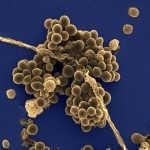Link to Pubmed [PMID] – 24078699
J. Immunol. 2013 Nov;191(9):4759-68
Sepsis is the third most common cause of neonatal death, with Group B Streptococcus (GBS) being the leading bacterial agent. The pathogenesis of neonatal septicemia is still unsolved. We described previously that host susceptibility to GBS infection is due to early IL-10 production. In this study, we investigated whether triggering TLR2 to produce IL-10 is a risk factor for neonatal bacterial sepsis. We observed that, in contrast to wild-type (WT) pups, neonatal TLR2-deficient mice were resistant to GBS-induced sepsis. Moreover, if IL-10 signaling were blocked in WT mice, they also were resistant to sepsis. This increased survival rate was due to an efficient recruitment of neutrophils to infected tissues that leads to bacterial clearance, thus preventing the development of sepsis. To confirm that IL-10 produced through TLR2 activation prevents neutrophil recruitment, WT pups were treated with the TLR2 agonist Pam3CSK4 prior to nebulization with the neutrophil chemotactic agent LTB4. Neutrophil recruitment into the neonatal lungs was inhibited in pups treated with Pam3CSK4. However, the migration was restored in Pam3CSK4-treated pups when IL-10 signaling was blocked (either by anti-IL-10R mAb treatment or by using IL-10-deficient mice). Our findings highlight that TLR2-induced IL-10 production is a key event in neonatal susceptibility to bacterial sepsis.


